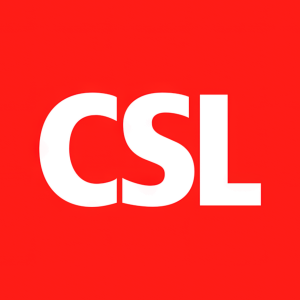Topline Results from Two-Year Primary Efficacy Endpoint in Pivotal Phase 3 DUPLEX Study of Sparsentan in Focal Segmental Glomerulosclerosis
The DUPLEX Study did not achieve the primary efficacy eGFR slope endpoint over 108 weeks of treatment
Secondary and topline exploratory endpoints trended favorably for sparsentan
Treatment with sparsentan resulted in a reduction of proteinuria that was sustained through 108 weeks of treatment
Sparsentan was well-tolerated with a consistent safety profile across all clinical trials conducted to date and comparable to irbesartan
ST. GALLEN,
"This is a preliminary data picture from the trial, and we will use additional time to analyze the full data set with our partner Travere," said Steve Pascoe, MD, Senior Vice President, Clinical and Therapeutic Area Strategy, CSL. "I would like to thank our partner, the patients and families, as well as the investigators and their staff members who participated and worked diligently to make this trial possible."
In the DUPLEX Study, a total of 371 patients were randomized 1:1 to receive either sparsentan or irbesartan, the active control.
eGFR Primary Efficacy Endpoints:
- Chronic slope (primary endpoint in
Europe ): From week 6 to week 108 of treatment, following the initial acute effect of randomized treatment, the difference in eGFR chronic slope was 0.9 mL/min/1.73m2 per year in favor of sparsentan (-4.8 mL/min per 1.73 m2 per year;95% CI: -6.34, -3.27) versus the active control irbesartan (-5.7 mL/min per 1.73 m2 per year;95% CI:-7.20, -4.18), p=0.4203. - Total slope (primary endpoint in US): From day one to week 108, the difference in eGFR total slope was 0.3 mL/min/1.73m2 per year in favor of sparsentan (-5.4 mL/min per 1.73 m2 per year;
95% CI: -6.89, -3.93) versus the active control irbesartan (-5.7 mL/min per 1.73 m2 per year;95% CI: -7.20, -4.29), p=0.7491.
The secondary, topline exploratory and hard endpoints in the study trended favorably for sparsentan.
Proteinuria Two-Year Exploratory Endpoints:
- Urine protein-to-creatinine ratio (UP/C): After 108 weeks of treatment, the change from baseline UP/C was
50% for sparsentan versus32% for irbesartan. - FSGS partial remission of proteinuria endpoint (FPRE): At week 108,
38% of patients on sparsentan achieved FPRE compared with23% on irbesartan. - Complete remission:
18% of patients on sparsentan versus7% on irbesartan achieved complete remission of proteinuria (UP/C <0.3 g/g) at any time during the double-blind period.
A preliminary review of the safety results through 108 weeks of treatment indicate sparsentan has been generally well-tolerated and the overall safety profile in the study to date has been generally consistent between treatment groups.
Travere Therapeutics intends to complete a full evaluation of the data from the DUPLEX Study and work with study investigators on future presentations and publication of the results at an upcoming medical meeting and/or in a peer-reviewed publication.
About FSGS
Focal segmental glomerulosclerosis (FSGS) is a rare proteinuric kidney disorder in both children and adults that is estimated to affect more than 40,000 patients in the US with similar prevalence in
About the DUPLEX Study
The DUPLEX Study is the largest interventional study to date in FSGS. It is a global, randomized, multicenter, double-blind, parallel-arm, active-controlled Phase 3 clinical trial assessing the efficacy and safety of sparsentan in 371 patients ages 8 to 75 years with primary FSGS. After a two-week washout period, patients are randomized 1:1 to receive either sparsentan or irbesartan, the active control, and subsequently dose titrated to the maximum dose of 800 mg of sparsentan or 300 mg of irbesartan, as tolerated. In February 2021, Travere Therapeutics announced that the ongoing pivotal Phase 3 DUPLEX Study of sparsentan in FSGS achieved its pre-specified interim FSGS partial remission of proteinuria (FPRE) endpoint with statistical significance. FPRE is a clinically meaningful endpoint defined as urine protein-to-creatinine ratio (UP/C) ≤1.5 g/g and a >40 percent reduction in UP/C from baseline. After 36 weeks of treatment, 42.0 percent of patients receiving sparsentan achieved FPRE, compared to 26.0 percent of irbesartan-treated patients (p=0.0094). Preliminary results from the interim analysis suggest that at the time of the interim assessment, sparsentan had been generally well-tolerated and shown a comparable safety profile to irbesartan. The primary efficacy endpoint in
About sparsentan
Sparsentan, a Dual Endothelin Angiotensin Receptor Antagonist (DEARA), is a novel investigational product candidate selectively targeting the endothelin A receptor (ETAR) and the angiotensin II subtype 1 receptor (AT1R). Pre-clinical data have shown that blockade of both endothelin type A and angiotensin II type 1 pathways in forms of rare chronic kidney disease, protects podocytes, prevents glomerulosclerosis and mesangial cell proliferation, and reduces proteinuria.
Sparsentan is also currently being evaluated in the pivotal phase-III PROTECT study for the treatment of IgA nephropathy (IgAN). In August 2021, Travere Therapeutics announced that the PROTECT Study met its pre-specified interim primary efficacy endpoint. After 36 weeks of treatment, patients receiving sparsentan achieved a mean reduction in proteinuria from baseline of 49.8 percent, compared to a mean reduction in proteinuria from baseline of 15.1 percent for irbesartan treated patients (p<0.0001).
FDA has recently approved sparsentan under an accelerated approval procedure to reduce proteinuria in adults with primary IgAN at risk of rapid disease progression.
The PROTECT Study is fully enrolled and is scheduled to continue as planned on a blinded basis to assess the treatment effect on eGFR slope over 110 weeks in the confirmatory endpoint analysis. Topline results from the confirmatory endpoint analysis are expected in the second half of 2023.
CSL Vifor and Travere Therapeutics signed a license agreement for CSL Vifor to commercialize Travere's lead product, sparsentan, in
CSL Vifor announced in August 2022 that the EMA had accepted for review a Conditional Marketing Authorization (CMA) application for sparsentan for the treatment of IgAN. The regulatory procedure is ongoing and a review decision on a potential approval is expected in the second half of 2023.
About CSL Vifor
CSL Vifor is a global partner of choice for pharmaceuticals and innovative, leading therapies in iron deficiency and nephrology. We specialize in strategic global partnering, in-licensing and developing, manufacturing and marketing pharmaceutical products for precision healthcare, aiming to help patients around the world lead better, healthier lives. Headquartered in St. Gallen,
The parent company, CSL (ASX:CSL; USOTC:CSLLY), headquartered in
![]() View original content to download multimedia:https://www.prnewswire.com/news-releases/topline-results-from-two-year-primary-efficacy-endpoint-in-pivotal-phase-3-duplex-study-of-sparsentan-in-focal-segmental-glomerulosclerosis-301813194.html
View original content to download multimedia:https://www.prnewswire.com/news-releases/topline-results-from-two-year-primary-efficacy-endpoint-in-pivotal-phase-3-duplex-study-of-sparsentan-in-focal-segmental-glomerulosclerosis-301813194.html
SOURCE Vifor International AG (CSL Vifor)







